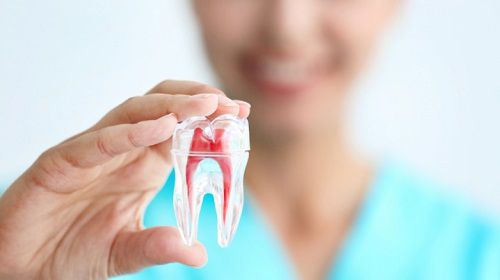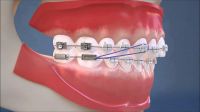In short - if diabetes is compensated, then any procedures and interventions can be carried out.
Table of contents.
Changes in the oral cavity in diabetes mellitus.
The main symptoms of dental and dental problems in patients with diabetes mellitus.
Basic rules of oral care for patients with diabetes.
How to care for your teeth with diabetes.
Basic rules of dental treatment for diabetes.
Changes in the oral cavity in diabetes mellitus.
1. Diabetes is often accompanied by changes in the composition and amount of saliva (hyposalivation). The patient begins to worry about dry mouth (xerostomia), the mucous membrane becomes thinner and more sensitive, the gums begin to bleed.
2. A small amount of saliva does not wash away food debris from the teeth, there is an accumulation of more plaque on the teeth and gums, which in turn leads to an increase in pathogenic microorganisms and fungi. In addition to food residues and a small amount of saliva, an increased blood glucose level contributes to the reproduction of pathogenic microflora. These microorganisms cause inflammation in the gums, caries, candidiasis, stomatitis.

3. Changes in the microvasculature (microangiopathy) all these processes exacerbate and complicate healing. Other diseases of the oral cavity may appear - periodontitis, leukoplakia, trophic ulcers.
4. In diabetes, phosphorus-calcium metabolism is impaired, which affects the state of the hard tissues of the teeth. The enamel becomes less durable and less resistant to acids produced by microorganisms and ingested with food. Therefore, caries and non-carious lesions are more easily formed.
The main symptoms of problems with teeth and gums in patients with diabetes mellitus:
Bleeding gums.
Soreness and swelling of the gums (inflammation of the gums).
Exposure of the necks of the teeth (lowering of the gums).
Teeth mobility.
Increased sensitivity of the teeth.
Pain in the teeth near the gums while brushing.
Depressions in the teeth near the gums (wedge-shaped defects, erosion).
Presence of stones.
Bad breath.
Patients with diabetes are strongly advised to have very thorough oral hygiene at home, use of an irrigator, frequent check-ups and professional hygiene.
Basic rules of oral care for patients with diabetes mellitus:
Visit your dentist every 3-6 months.
Carry out regular professional oral hygiene.
After each professional hygiene, change the toothbrush and, if necessary, carry out anti-inflammatory therapy prescribed by the doctor (for example, use toothpastes and rinses with antiseptic components for 2 weeks).
Treat gums and teeth on time.
Carefully care for your teeth at home.
Read more here: "How to care for your teeth with diabetes."

Basic rules of dental treatment for diabetes.
Usually, people with type 1 and 2 diabetes can undergo any dental procedure, including removal and implantation. But it is important to follow some recommendations so that manipulations are easily tolerated, and healing and recovery is quick:
Dentist visits should be scheduled, preferably after breakfast, in the morning. Try to avoid visits for "acute pain".
If necessary, you can use local anesthesia without adrenaline, but in the presence of concomitant cardiovascular diseases, choose an anesthetic without other vasoconstrictors (substances that constrict blood vessels).
For planned interventions, it is necessary that the state of diabetes be compensated, sugar does not "jump", be stable 2 weeks before and 6 weeks after manipulations. Especially when it comes to implantation and some other serious surgical interventions.
Glycemia during elective surgery: Target concentration before surgery 7.8-10 mmol / L (120-160 mg / dL) During surgery, range 6.7-11.2 mmol / L. (100 - 180 mg / dl)
Absolutely always before taking, or if the intake is long, then during the intake, it is necessary to control the sugar so that there are no surges (hypoglycemia or hyper). Therefore it is IMPORTANT! It is imperative to have a glucometer, insulin, some kind of food product to increase sugar and glucagon with you.
If the sugars "jump", then it is necessary to consult with an endocrinologist, since abrupt uncontrolled jumps above or below the established norms will provoke difficult wound healing and the development of complications. And until these surges are compensated, it is recommended to postpone dental treatment.
After ingestion, a jump in sugar is possible, caused by stress and pain reaction. Therefore, after taking, if necessary, it is recommended to take pain relievers and lower sugar with an injection of insulin.
After taking it, you must strictly follow the doctor's recommendations, take the prescribed drugs and observe thorough oral hygiene.
Read the same:
Implantation, prosthetics and orthodontic treatment for diabetes mellitus.
Is it possible to carry out implantation, prosthetics and orthodontics for diabetes mellitus?
Features of prosthetics in diabetes mellitus
Features of implantation with sugar



